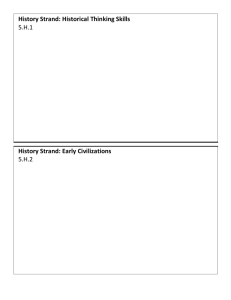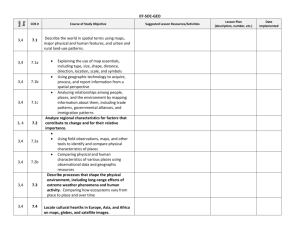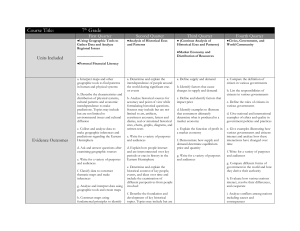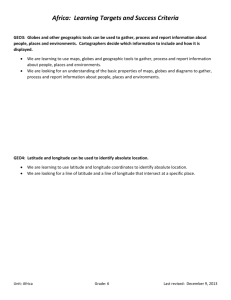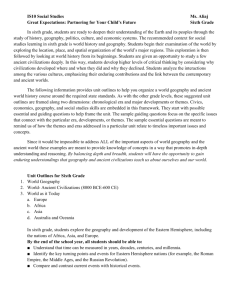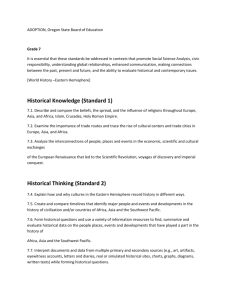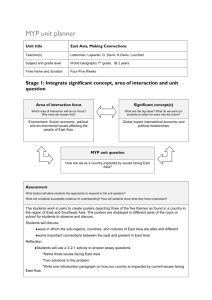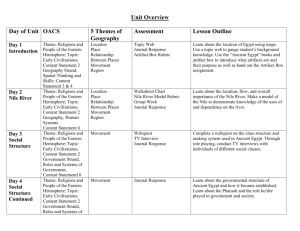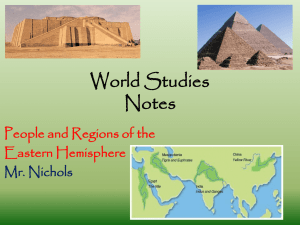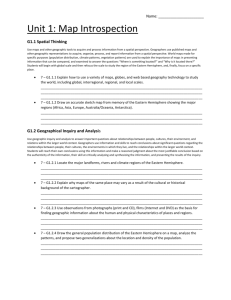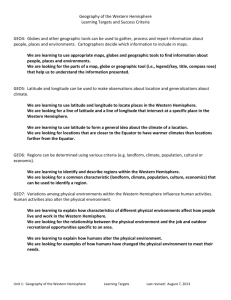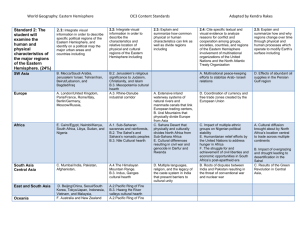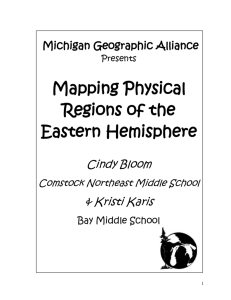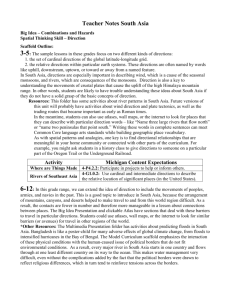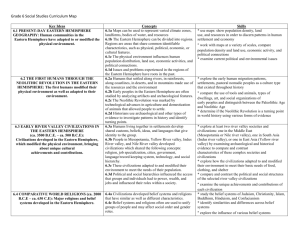Ohio Department of Education State Standards 6th Grade
advertisement
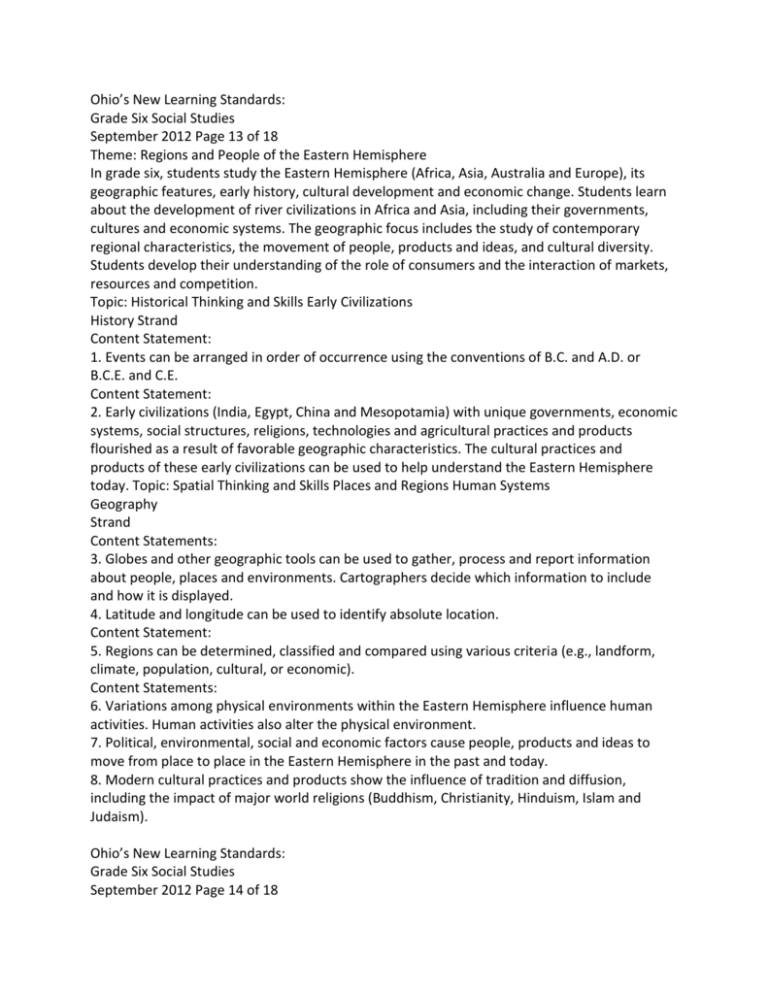
Ohio’s New Learning Standards: Grade Six Social Studies September 2012 Page 13 of 18 Theme: Regions and People of the Eastern Hemisphere In grade six, students study the Eastern Hemisphere (Africa, Asia, Australia and Europe), its geographic features, early history, cultural development and economic change. Students learn about the development of river civilizations in Africa and Asia, including their governments, cultures and economic systems. The geographic focus includes the study of contemporary regional characteristics, the movement of people, products and ideas, and cultural diversity. Students develop their understanding of the role of consumers and the interaction of markets, resources and competition. Topic: Historical Thinking and Skills Early Civilizations History Strand Content Statement: 1. Events can be arranged in order of occurrence using the conventions of B.C. and A.D. or B.C.E. and C.E. Content Statement: 2. Early civilizations (India, Egypt, China and Mesopotamia) with unique governments, economic systems, social structures, religions, technologies and agricultural practices and products flourished as a result of favorable geographic characteristics. The cultural practices and products of these early civilizations can be used to help understand the Eastern Hemisphere today. Topic: Spatial Thinking and Skills Places and Regions Human Systems Geography Strand Content Statements: 3. Globes and other geographic tools can be used to gather, process and report information about people, places and environments. Cartographers decide which information to include and how it is displayed. 4. Latitude and longitude can be used to identify absolute location. Content Statement: 5. Regions can be determined, classified and compared using various criteria (e.g., landform, climate, population, cultural, or economic). Content Statements: 6. Variations among physical environments within the Eastern Hemisphere influence human activities. Human activities also alter the physical environment. 7. Political, environmental, social and economic factors cause people, products and ideas to move from place to place in the Eastern Hemisphere in the past and today. 8. Modern cultural practices and products show the influence of tradition and diffusion, including the impact of major world religions (Buddhism, Christianity, Hinduism, Islam and Judaism). Ohio’s New Learning Standards: Grade Six Social Studies September 2012 Page 14 of 18 Topic: Civic Participation and Skills Roles and Systems of Government Government Strand Content Statement: 9. Different perspectives on a topic can be obtained from a variety of historic and contemporary sources. Sources can be examined for accuracy. Content Statement: 10. Governments can be categorized as monarchies, theocracies, dictatorships or democracies, but categories may overlap and labels may not accurately represent how governments function. The extent of citizens’ liberties and responsibilities varies according to limits on governmental authority. Topic: Economic Decision Making and Skills Scarcity Markets Financial Literacy Economics Strand Content Statements: 11. Economists compare data sets to draw conclusions about relationships among them. 12. The choices people make have both present and future consequences. The evaluation of choices is relative and may differ across individuals and societies. Content Statements: 13. The fundamental questions of economics include what to produce, how to produce and for whom to produce. 14. When regions and/or countries specialize, global trade occurs. Content Statement: 15. The interaction of supply and demand, influenced by competition, helps to determine price in a market. This interaction also determines the quantities of outputs produced and the quantities of inputs (human resources, natural resources and capital) used. Content Statement: 16. When selecting items to buy, individuals can compare the price and quality of available goods and services.


